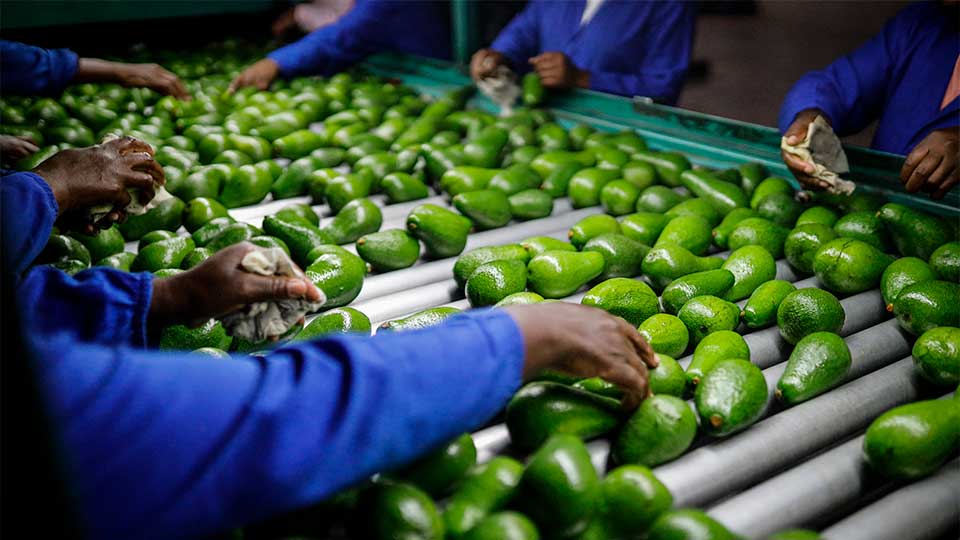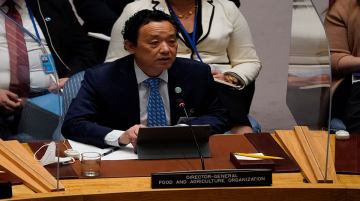
Agriculture remains the backbone of many African economies since it accounts for approximately 60% of all employment, a main earner of foreign exchange, source of both savings and tax revenues and accounts for around 40% of the continent’s hard currency. The agricultural sector is the main source of industrial raw materials for industrial value-added. In the rural areas, agriculture is the main source of livelihood for 70-80% of the population, it is therefore very important for economic growth and development.
Trade in agriculture is expected to result in the development of inclusive regional value chains relating to priority commodities, which included the participation of various types of farmers (such as smallholder and commercial farmers) processors, and service providers. Trade is also expected to increase national food production capacities due to increased demand from the regional value chains. Lastly, increased participation of the private sector in trade is expected to inject investments that promote value addition to commodities that create jobs. When various stakeholders along the value chain participate in trade, this results in sustainable job creation which in turn improves agricultural productivity and consequently food and nutrition security.
Where Does China Fall Compared to Africa’s Other Development Partners in Agricultural Trade?
African countries have traded in agricultural commodities with several partners, including development partners such as France, United Kingdom, United States, and the European Union (EU). A review of trends for the period 2018 to 2020 shows that Africa’s export to China (compared to France, the UK, and the U.S.) is on the rise, however, in 2020 there was a major decline in exports due to the COVID-19 pandemic. Africa’s agricultural export to China quadrupled its exports to France and the US and is eight times as much as what it exports to the UK (Figure 1).

While Africa’s agricultural commodities exports to the EU are higher than that of China, the EU is a regional group made up of 27 countries, hence China’s trade as one country is considerably high. Africa is therefore a major player in meeting China’s domestic demand for agricultural commodities. In 2020, the proportion of Africa’s agricultural commodities export to China more than doubled that of the EU. Figure 2 further shows that most of Africa’s exports to the selected development partners are largely agricultural exports, with China actually leading as an export destination for the period 2018-2020. Even with the COVID-19 pandemic, the agricultural export structure remains high for China, compared to the other countries of focus.
Comparing China’s trade with Africa and Asia, Figure 3 shows that China’s agricultural imports from Asia are much higher in absolute terms compared to those from Africa. However, the proportion of China’s agricultural commodities imports as a proportion of its total imports from the same country, shows that China is importing more agricultural commodities from Africa (Figure 4).

So Why Has China’s Agricultural Trade With Africa Increased?
China’s increasing agricultural trade with Africa is rising due to several factors. First, China’s accession to the WTO in 2001 not only increased her trade with the world but gave the drive to pursue aggressive market access initiatives within this multilateral trading framework. Secondly, China has signed several bilateral trade agreements (BIA) with African countries, some of the agreements relating to trade matters, dual taxation agreements, sanitary and phytosanitary measures, and specific agreements for products among others. Therefore, at the policy level, China has largely facilitated and guaranteed its entry into Africa’s raw materials markets. From a political perspective, China’s non-interference policy has also been attractive to most African countries, who still face challenges related to colonial legacy and aid conditionalities from the western countries. Lastly, the increased demand for raw materials and energy that is relatively abundant and untapped in Africa has resulted in China’s increased trade with Africa.
Is China -Africa Agricultural Trade Good For Both China and Africa?”
This results in a very nuanced response depending on perspective. The top 5 commodities that Africa exports to China are: mineral fuels, ores slag and ash, copper and articles, other base metals, and wood. Therefore, China is working towards meeting its domestic demand for energy and raw materials. China has also put in place several initiatives at the national, provincial and private sector level to promote African trade, these include zero-tariff policies on selected commodities, bilateral and free trade agreements, the establishment of economic and trade cooperation zones, and trade and information exchange fairs.
From the African perspective, increased trade with China will earn more foreign exchange and promote agricultural mechanization in order to enable mass production to meet the Chinese market demand. However, the key challenge remains on the question of Africa’s ability to use its own raw materials to promote value addition and agro-processing industries, while also externally trading on the same commodities.
African countries on the other hand must deal with supply-side constraints in order to have substantive gains from the China Africa trade. Some of the challenges include weak export product diversity and poor quality of the same export products. An empirical analysis using a gravity model for China and Africa carried out found that a 1% increase in China’s gross domestic product (GDP) will result in exports from Africa to China increasing by 0.670%. This implies that African countries have guaranteed (agricultural commodities) market in China if China’s output is increasing.
For African countries, China-Africa trade and cooperation should result in an inflow of investment in sectors such as agro-processing and manufacturing, which can absorb a large proportion of the labor force. With the current shard of manufacturing activity and increased exports of raw materials such as mineral fuels, ores slag and ash, copper and articles, base metals, and wood, it is unlikely that African countries can create productive jobs and stable growth through manufacturing. Thus, Africa’s development goal of sustainable industrialization is unlikely to be achieved by only reorienting its agricultural commodities to China or Asia, since this increases the risk of vulnerability to commodity price shocks.
Going Forward, What More Can Policymakers Do To Support Agricultural Trade Between China and Africa?
For mutually beneficial trade, the FTAs, BIAs between Africa and China should also focus on future sustainability by diversification of products with higher value-added value, investments in trade facilitation infrastructure in order to improve getting the diversified products to markets. Furthermore, China’s agricultural standards for exports should be harnessed by African countries to improve their agricultural outputs.
Miriam W. Oiro Omolo, Ph.D. is the Executive Director at the African Policy Research Institute in Nairobi, Kenya.







